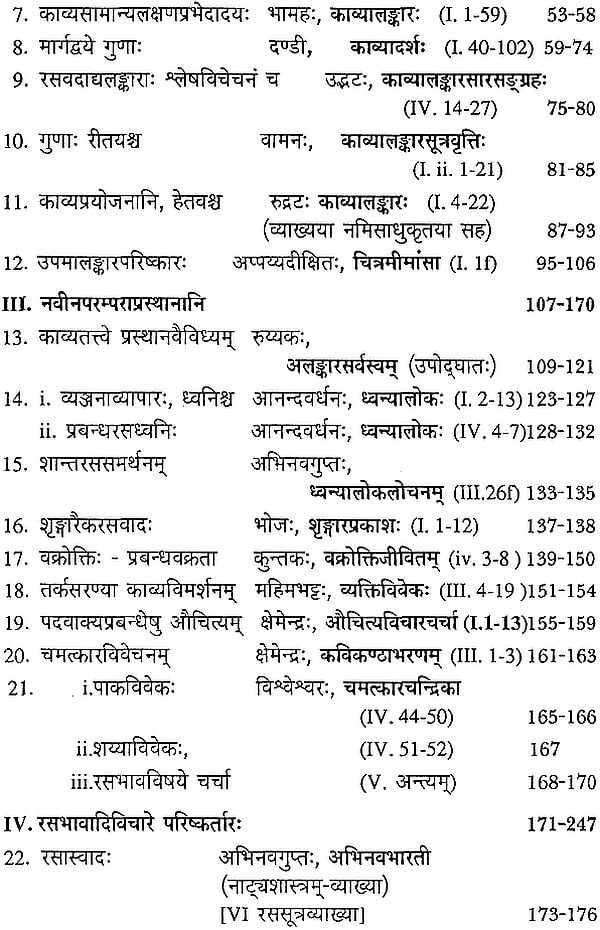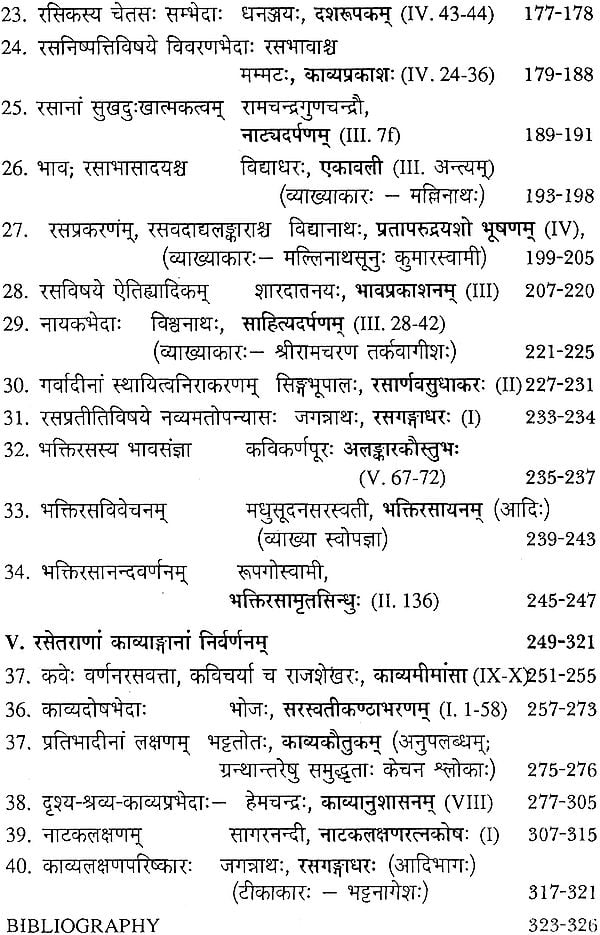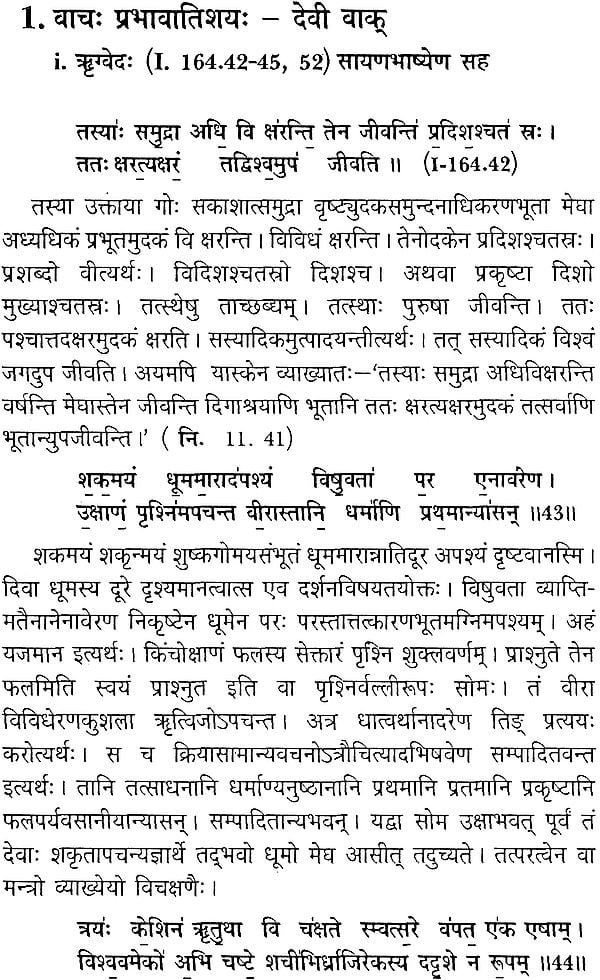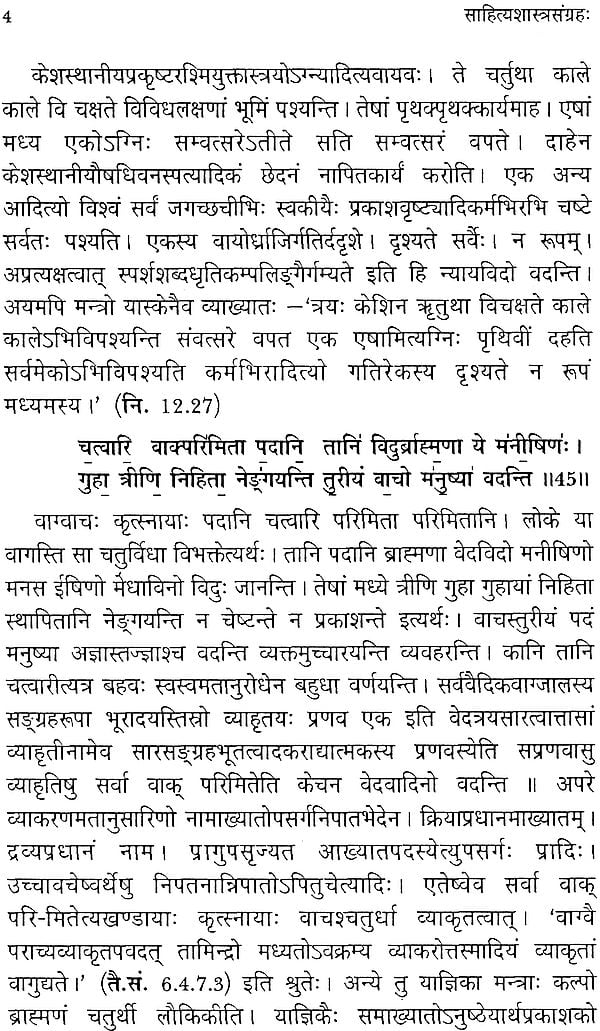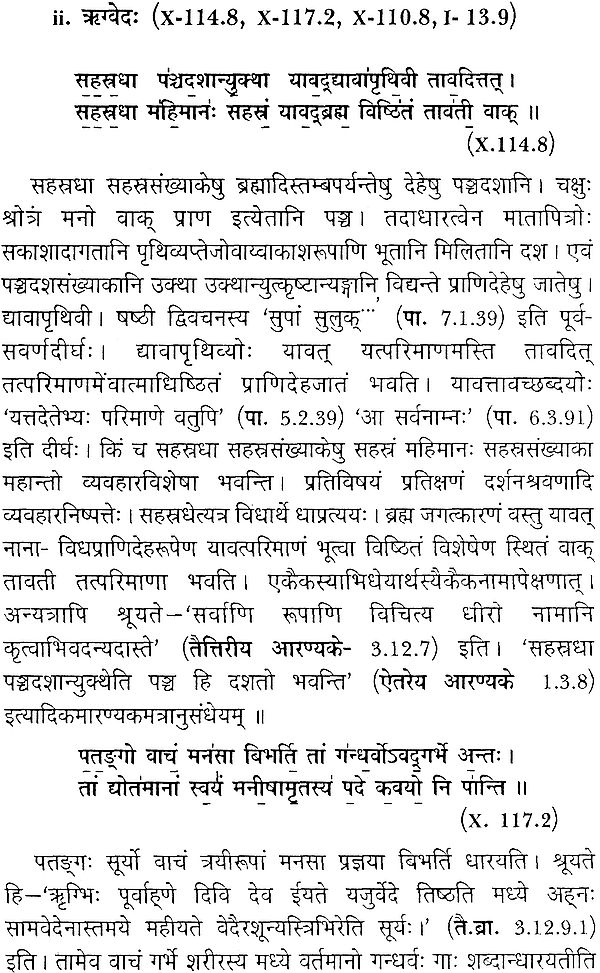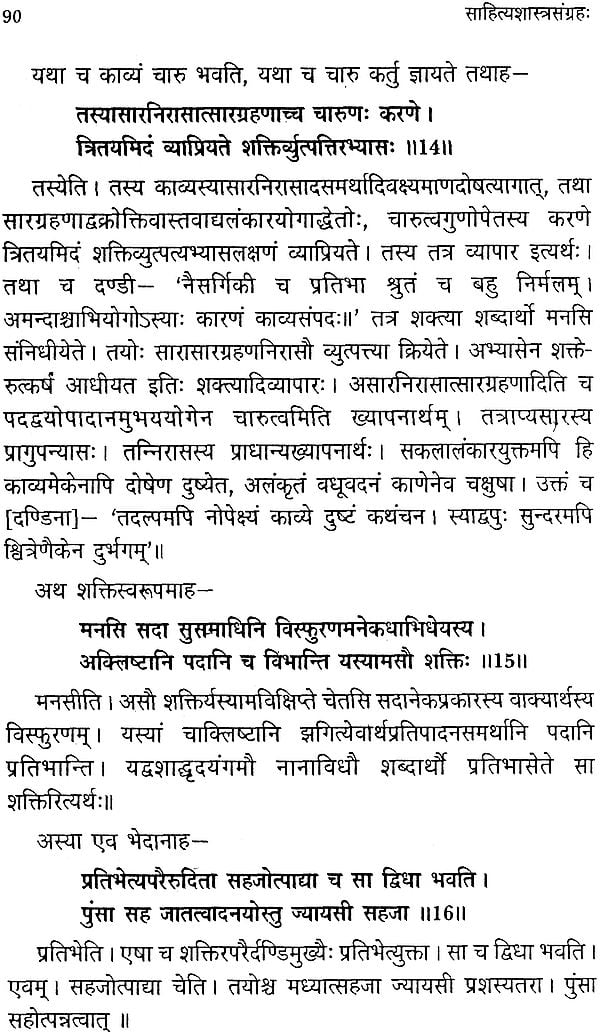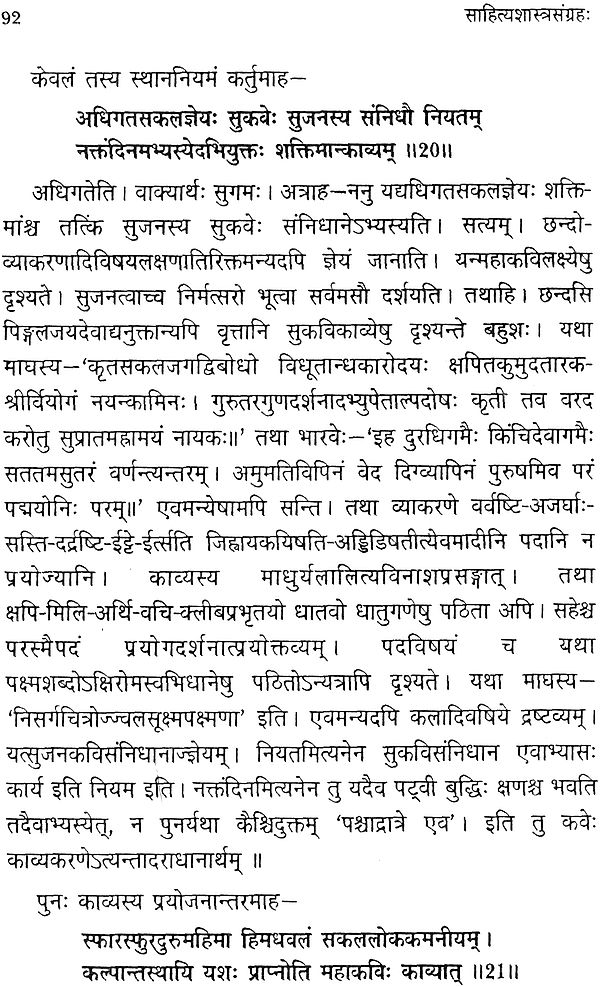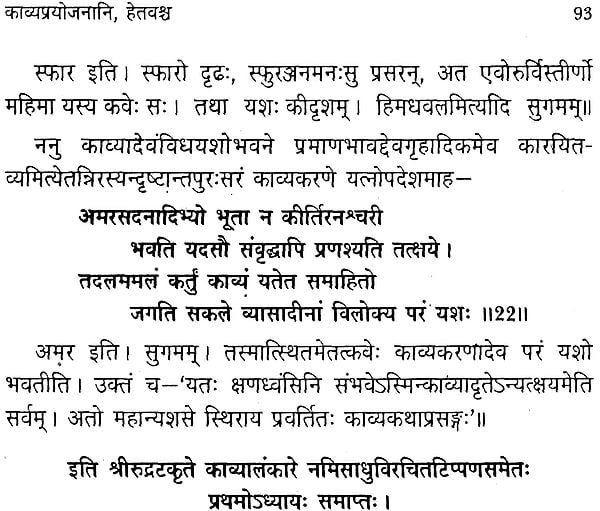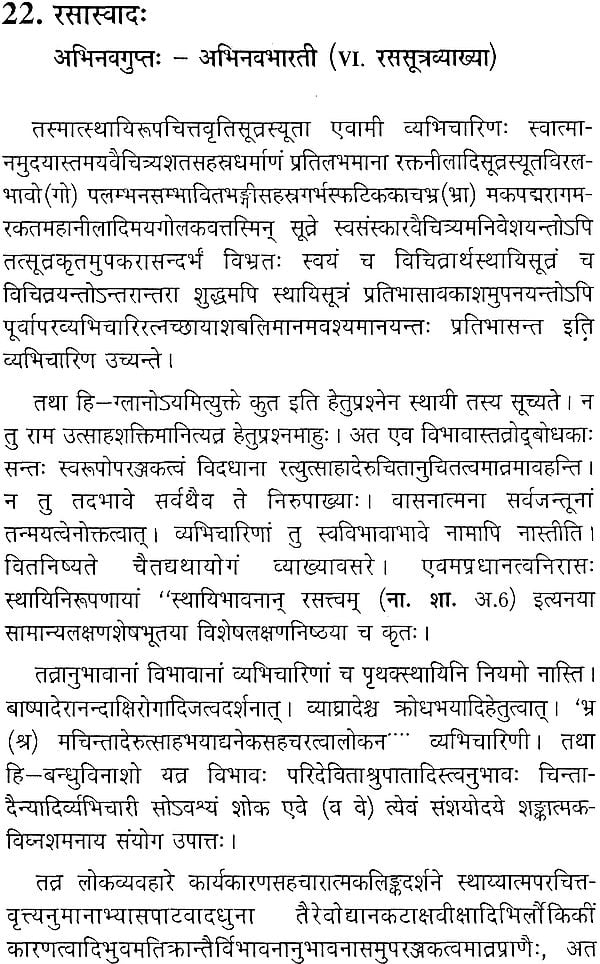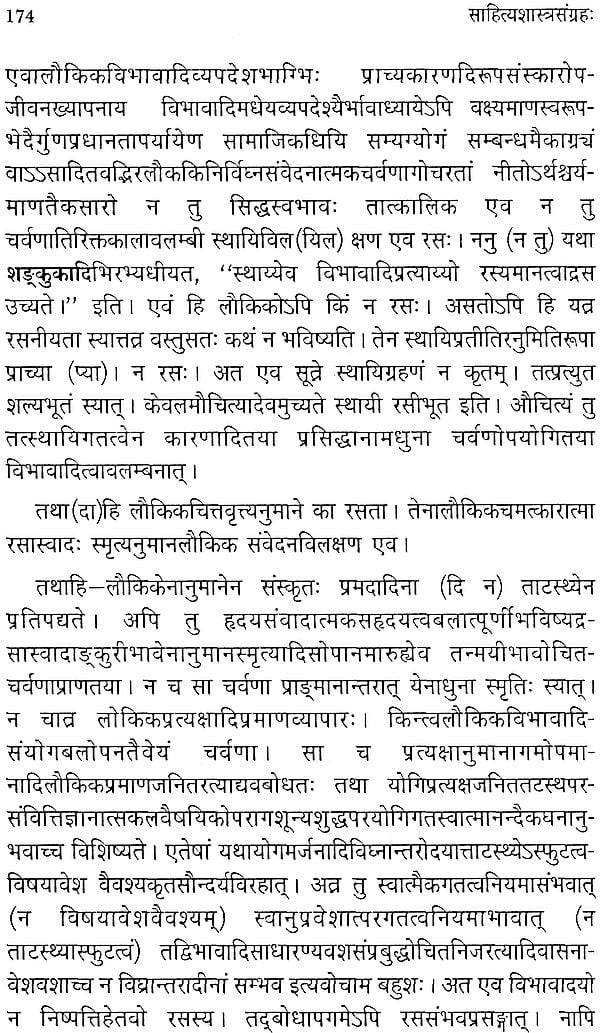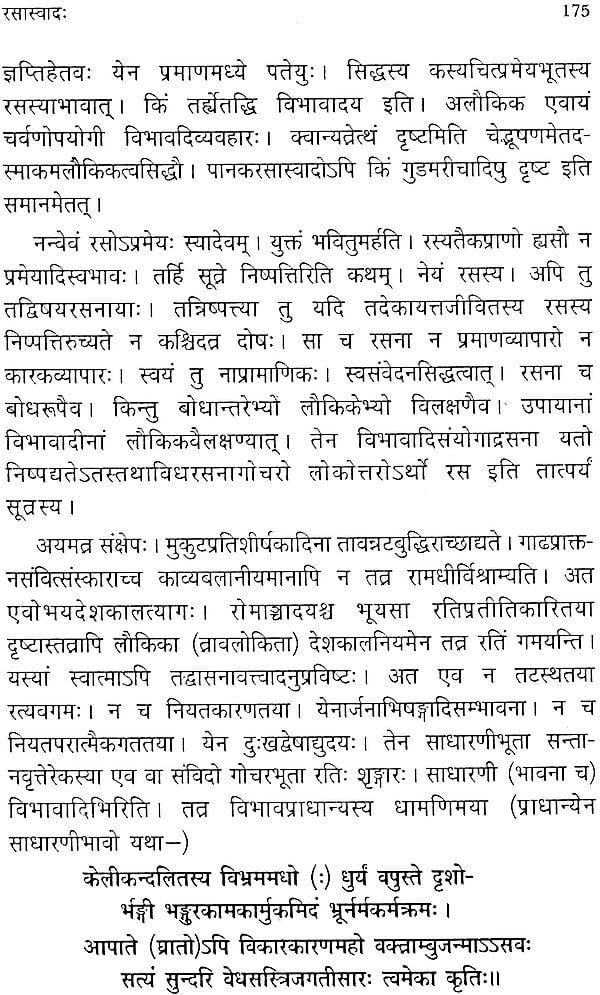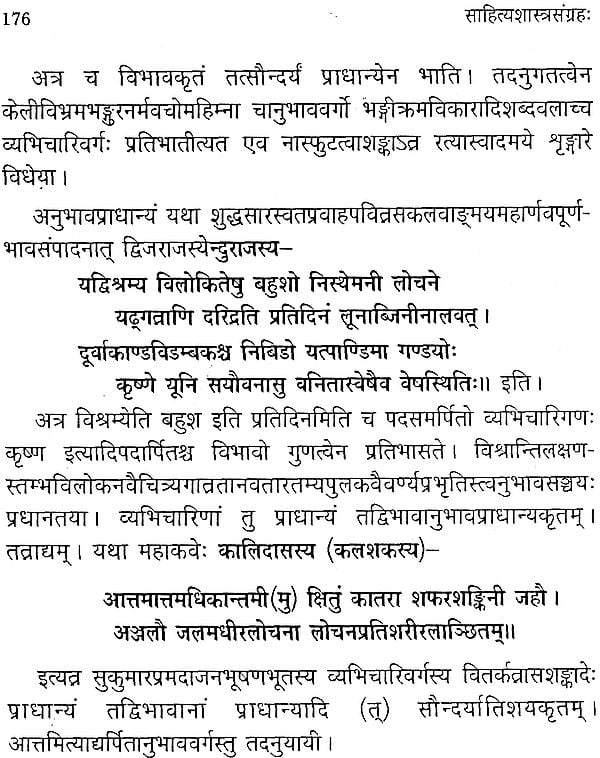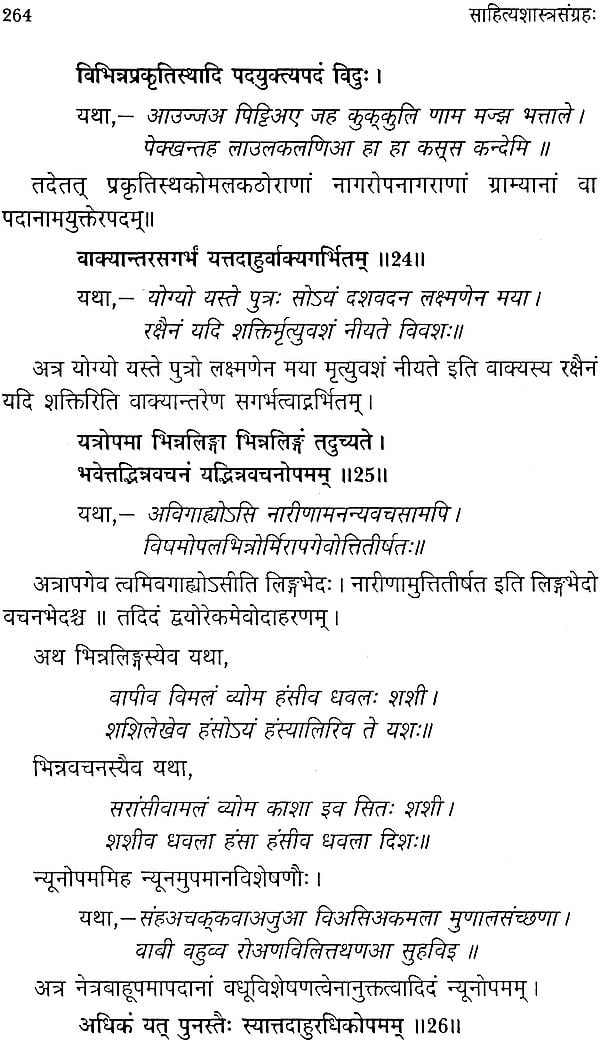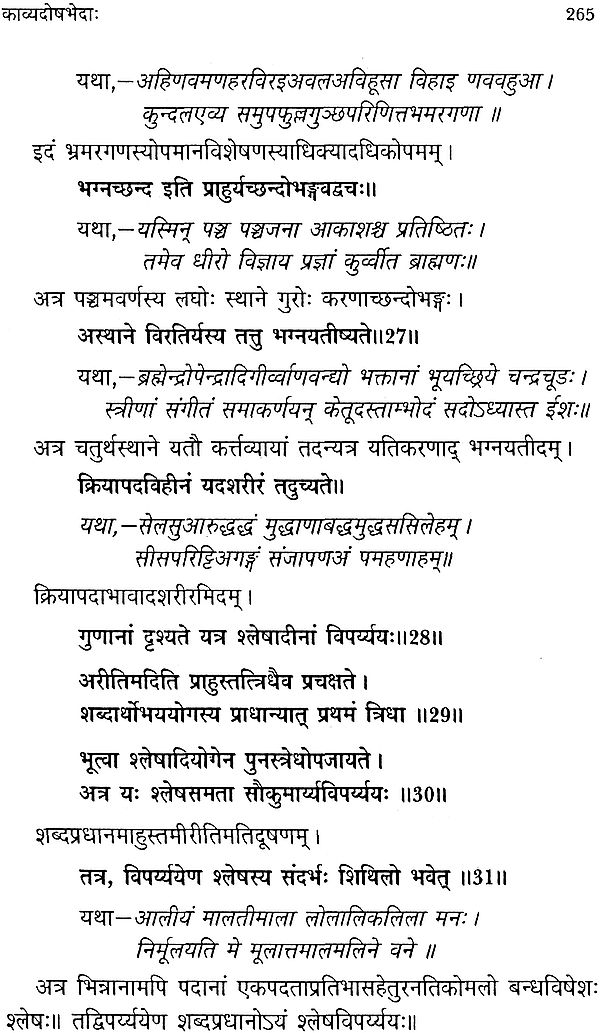
साहित्यशास्त्रसंग्रह (साहित्यरत्नकोशे): Sahitya Sastra Sangraha Vol. X - An Anthology of Kavyas and Poetics in Sanskrit (An Old and Rare Book)
Book Specification
| Item Code: | NZI683 |
| Author: | के. कृष्णमूर्ति (K. Krishnamurti) |
| Publisher: | Sahitya Akademi, Delhi |
| Language: | Hindi |
| Edition: | 1994 |
| ISBN: | 8172017766 |
| Pages: | 348 |
| Cover: | Hardcover |
| Other Details | 9.0 inch X 5.5 inch |
| Weight | 490 gm |
Book Description
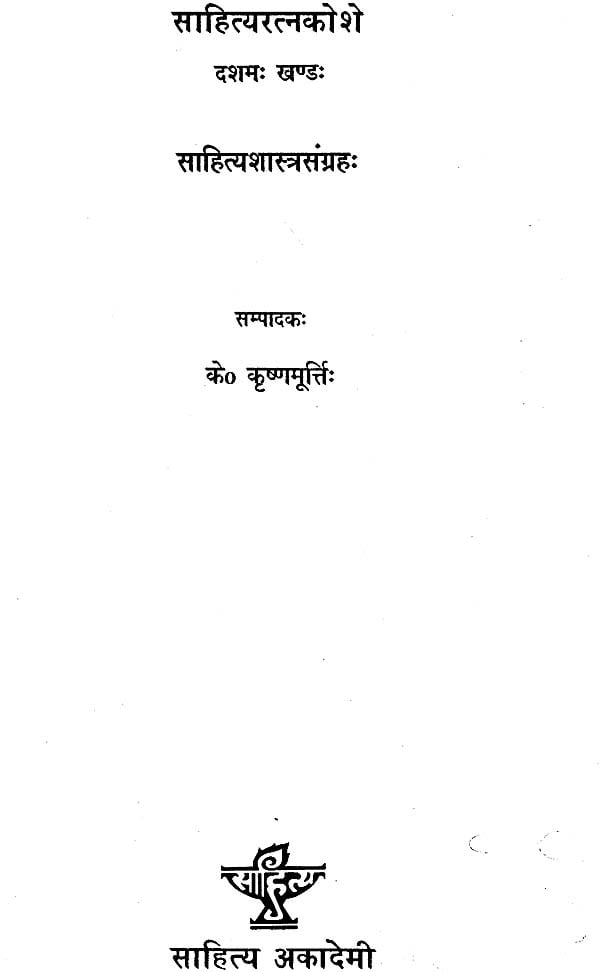
Divided in to five parts, the Sahityasastra Sangraha, an anthology illustrates the integral and or ganic unity that underlies the varied theories of Indian aesthetic thought. In the first two parts-prastavikam and pracinaparampara the editor presents samplings of the spiritually oriented aesthetic thought of the ancient India, represented by Yaska, Patanjali and Bhartrhari; and the formal aspects of traditional poetics like alankara, guna, riti and laksana.
In the third and fourth parts, Professor K. Krishnamoorthy briefly discusses widely known concepts like dhvani, vakrokti, aucitya, camatkara, paka and sayya; and attempts a detailed appraisal of the different facets of the rasa theory as it developed from time to time.
The fifth part is devoted to a delineation of pratibha, its functioning in terms of description, characterisation etc. This part also deals in minute detail with the treatment of literary genres and literary flaws (kavya dosa).
The compiler-cum-editor Professor K. Krishnamoorthy (b. 1923) is a renowned scholar and academician. Besides being a prolific writer in English and Kannada is an authority in Indian poetics. His recently published book on Kalidasa substantiates his mastery over Indian aesthetics thought. His well-known publications include Dhvanyaloka text critically edited (1982) vakroktijivita text critically edited (1977), monograph on Banabhatta (1977) and independent works like Essays in Sanskrit Criticism (1974), Studies in Indian Aesthetics and Criticism (1979) and critical editions of Bharata’s Natyasastra with Abhinavabharati.
Literary use of language in India is as old as the age of the Rigveda. The vedic seers were known not only as seers (rsi-s) whose vision transcended the limitations of time and place (cf. ‘kavayah’ kranta-darsinah), but also artist-craft-smen who chiselled language into patterns of beauty (karu-s and silpin-s). The vedic hymns to deities like Vak, Sarasvati, ila and Mahi reveal illuminating flashes of intuition into the infinite dimensions and profound mysteries of Logo which anticipate the more sustained musings of the upanisads on these unfathomed aesthetic deptha of anada, madhu, rasa and so forth. The Atharvaveda, in particular, us into the inmost shrine of creative endeavour and esoteric wisdom in its eulogy of kama and kala which provided the germs for the rise of diverse philosophical schools in later India. Since their religion was simple and spirituality deep, their poetic hymns preserve their all-time preciousness. This poetic tradition of the seers was given new dimensions of intellectual analysis in the Nirukta of Yaska on the one hand and Mahabhasya of the great grammarian Patanjali on the other. Both these disciplines, viz., etymology and grammar were first held high as Vedangas or ancillaries to vedic studies; and chronologically, they precede the Christian era.
Indian vedic studies developed a science of interpretation or hermeneutics geared to explicate all sacred texts either as positive injunctions for religious duties or as prohibitions from irreligious pursuits. This system of interpretation known as mimamsa also came to be classed as Semantics (vakya-sastra) par excellence. Its main principles are summed up in the following couplet oft-quoted:
Upakramopasmharauabhyaso ‘purvata phalam.
Arthavadopapatti ca lingam tatparya-nirnaye.
The purport of a sentence should be explicated by taking into account seven considerations, viz., 1. Beginning, 2. End, 3. Iteration, 4. Originality, 5. Intended result, 6. Figurative expression; and 7. Justification. This methodology is indeed so scientific that almost all Indian systems of philosophy adopt it verbatim. The method imbibed the best in the approaches of analysis and synthesis while placing emphasis on the holistic core of all linguistic communication. Another important achievement of the methodology was in bifurcating or distinguishing the plainly referential use of words from their figurative or metaphorical implication. The former was designated abhidha while the latter was laksana. The Indian penchant for fine classification led to a division of laksana into several types pinpointing to what extent the referential meaning was accommodated or discarded in the final stage. And the whole meaning or significance of a sentence came to be termed its tatparya or purport, or vakyartha.
Indeed it was but natural that Indian theoreticians on Kavya or literature utilized the findings of the Mimamsakas in their general theories of alankara, divided under the broad heads of svabhavokti (natural expression and vakrokti (deviant expression). It was realised that latter was more predominant in poetry than the former whose realm extended over all the sciences. Hence writers of vyakhyana on poems and plays are seen more at pains to draw the attention of the reader to the nuances of ornate alankaras or figures of speech, than towards disengaging the essence of the whole work. They are designed as guidebooks mostly to ginners, helping them to construe the words in a proper prose order and recognise the grammatical formations correctly. No wonder if one feels today that most of them have missed the wood in their attention to trees. Witty diatribes against the tribe of such commentators are common in Sanskrit literature. One of them is that the glossators slur over genuine difficulties in the text by categorising them as spastartha or easy and wise eloquent over non-issues. In a word, they only add to the confusion of the poetry reader (cf.vastu-vipla-vakrtah prayana tikakrtah.).
The credit of highlighting the core meaning or content of literature as sentiments and emotions in their infinite variety and identifying the linguistic expression of these as dhvani, a unique poetic function, goes indeed to Anandavardhana. A unique poetic function, goes indeed to Anandavardhana. He gave the proper direction to critics for the interpretation of literature in terms of rasa-dhvani. This dhvani-content was shown to be the soul of the body of literature. Literary charm was holistic, something over and above the beauty of the individual parts. His able advocate was Abhinavagupta.
These two together demonstrated, by their detailed interpretationsof the ruling rasa underlying whole epics like the Ramayana and the Mahabharata how a meaningful understanding and appreciation of literature depended on discovering the subtle shades of overt suggestion permeating every part of a poem - even micro-elements like a suffix or a pronoun - geared to the single purpose of promoting the rasa. They also succeded in explaining the complimentary role of gunas like sweetiness and alankaras like metaphor in adding to the beauty of the rasas in question. In this New Aesthetic a literary interpretation became synonymous with rasa -Explication, a task as much of the heart as of the head. hence the literary interpreter in Sanskrit is called by the name rasika, rasajna or sahradya for which we have no exact equivalent in English. We have beautiful subhasita about this cited in Sayana's Subhasitasudhanidhi.
Kuntaka, the next great master critic and interpreter of Sanskrit literature felt that anandavardhana's dhavani tended to underestimate the importance of alankaras or adornments of the poetic body (sarira) or structure. hence he propagated a new aesthetic in which every artful turn of poetic expression was given an importance on a par with that of the rasa that served as the poetic core. This theory of vakrokti makes it incumbent on the critic to be equally sensitive to the appreciation of the beautifies of poetic language as well as of poetic content.

